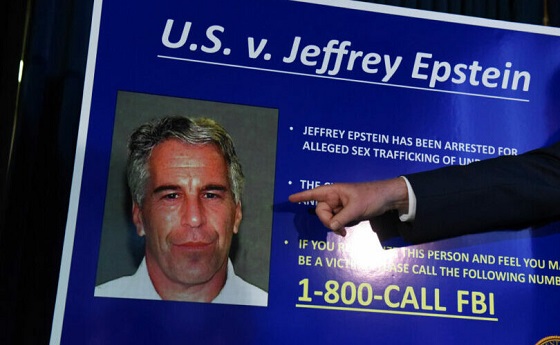Brownstone Institute
Ron DeSantis on Florida’s Covid Response
BY
The crucial turning point in the career of Florida’s Ron DeSantis came with his handling of the coronavirus panic of 2020. Deploying a lighter touch than nearly all states from the beginning, Florida opened up completely, to the screams of horror from major media. He then eschewed mask and vaccine mandates, while keeping schools and beaches open.
His new book The Courage to Be Free: Florida’s Blueprint for America’s Revival explains the backstory to his response and reveals the intense pressures he faced at the time, including the scientific influences that drove his decision-making.
Chapter 10 opens with some quotations from President Eisenhower’s famous warning about the military-industrial complex. “Eisenhower cited the alarming risk that what he termed a “scientific-technological elite”—an elite that is neither interested in nor capable of harmonizing all the competing values and interests that are the hallmark of a free, dynamic society—could commandeer policy and, ultimately, erode our freedoms,” DeSantis writes. “The response to the COVID-19 pandemic vindicated President Eisenhower’s fears, to the detriment of the people of the United States, especially our nation’s children.”
The remainder of the chapter serves as a competent historical survey of the calamity: how it began, how pseudoscience took over, the media complicity, and the strange way common sense and normal liberty were all thrown out the window. As governor, he faced a choice to go along or go his own way. He chose the second path. The narrative in this book is revealing of the stress, the frenzy, and the difficulty of making a hard decision for freedom in the midst of every special interest demanding that you go the other way.
His summary statement of the period:
The elites that drove the response to the COVID-19 pandemic fomented hysteria when they should have promoted calm, produced shoddy modeling and analysis to try to justify destructive policies, asserted certainty when nuance was called for, and allowed political partisanship to trump evidence-based medicine. The cornerstone of the US COVID response—the so-called “15 Days to Slow the Spread” that evolved into boundless Faucist “mitigation”—was ill-conceived, crafted based on inaccurate assumptions, and blind to the harm that heavy-handed public health “interventions” inflict on society.
While doing little, if anything, to slow the course of disease spread, this response in much of our country curtailed freedom, destroyed livelihoods, hurt children, and harmed overall public health. It also exposed the partisanship and rot in public health and the scientific community writ large. In the weeks leading up to President Trump’s announcement of the “15 Days to Slow the Spread” on March 16, 2020, it didn’t seem to me like the US was going to shut down our country. Many of the key players on the then recently formed White House Coronavirus Task Force were urging calm. The pathogen was serious, we were told, but there was no need to panic.
Of course panic was exactly what happened, and this was despite the strange timing of Anthony Fauci’s February 28, 2020, article in the New England Journal of Medicine. He explained that it is most likely that this virus will prove to be about as severe as a bad season of flu. And that article was approved for publication several weeks earlier when he was still counseling calm. By the time it came out, he had already shifted to promoting panicked lockdowns.
The shift in tone was informed in part by epidemiological modeling from Imperial College London. “Drs. Fauci and Birx spearheaded the drive for coercive mitigation policies based largely on epidemiological modeling, not empirical data,” writes DeSantis. “In publicly characterizing the shutdown as a short-term measure, Fauci and Birx were, in reality, setting the country on a course of shutdown until eradication—a goal that was not possible to achieve, but would go on well into 2021, to the detriment of millions upon millions of Americans.” Indeed, “These flawed models drove some truly disastrous policy decisions.”
DeSantis further quotes from Deborah Birx’s own book in which she says that the 15 days bit was always a ruse.
A few days later, the president held a press conference with Fauci and Birx and other members of the task force to announce that he was extending the federal shutdown guidelines for thirty days. Congress had just passed, and the president had just signed, the CARES Act, a massive $2.2 trillion spending bill that appropriated money that could finance a lengthy shutdown by providing stimulus payments to individuals, increasing unemployment benefits, and forgiving loans for small businesses that closed. These two factors really changed the dynamic across the country. The initial call for fifteen days was viewed as a temporary measure but, based on a flawed hospitalizations model, the country was pushed into a lengthy period of mitigation. When asked when it would be appropriate to relax mitigation measures, Fauci broadly and irresponsibly said, “When it goes down to essentially no new cases, no deaths.” What started as a precautionary fifteen-day period of social distancing had transformed into a de facto shutdown until eradication. The consequences of this transformation proved to be devastating to America.
At this point in the narrative, the governor backs up in time to discuss what an unprecedented policy response this truly was. It was never recommended, much less deployed in the past. He tells how he revisited pandemic plans from the past and found the 2006 treatise by Donald A. Henderson, which concluded that coercive mitigation strategies would turn “a manageable epidemic” into “catastrophe.”
What is crucial about this section is just how deeply the governor was reading in the real science at the time. He figured out, for example, that it was crucial to discover just how prevalent this virus really was in the population. Here he relied on Jay Bhattacharya’s April 2020 study of seroprevalence in Santa Clara, California.
He further noted Jay’s public stance against lockdowns. Here was when the governor stopped trusting anything coming from Washington and started leaning even on Florida’s county governments to open everything up. The media howled in horror and dubbed him DeathSantis. The same happened on the mask and vaccine mandates, which the governor effectively outlawed in the state, based not only on his desire to protect the people’s freedoms but also the actual science appearing in the journals.
Particularly fascinating here is the author’s discussion of how he came to realize the seasonality of the virus, a point that was nearly completely lost on major media and the CDC. His realization came from the work of Stanford professor Michael Levitt in his empirical discoveries concerning the trajectory of the disease. This confirmed for him that his number one job was to focus on the vulnerable while protecting the freedoms of everyone else.
Here we have a fascinating narrative of a governor who initially was willing to follow federal guidance until he, nearly on his own, came to discover that it was actually full of holes. At this point, he had to go his own way. We can look back and observe that this took him too long and he surely agrees. What’s notable was his willingness to look at data and facts and apply them in light of his responsibilities as governor.
At the very start of the pandemic, I did not appreciate how the so-called public health experts were such a stridently partisan, highly ideological mess. This became clear a couple of months later when the same public health experts who had been sharply critical of Americans for leaving their homes because of COVID-19 suddenly endorsed the mass protests following the death of George Floyd in Minneapolis…. For two months, these so-called experts lambasted anyone for making a cost-benefit analysis when it came to COVID-19 mitigation policies. Then, the moment it suited their political interests, they reversed course by endorsing the protests as passing their cost-benefit analysis over COVID-19 lockdowns. That they specifically rejected protesting for other causes they did not support told me all I needed to know about what partisans these people were.
At this point, he was done and even suspended the bit of guidance he had previously implemented from the CDC.
After several weeks of consuming data and measuring it against policies implemented around the country, I decided that I would not blindly follow Fauci and other elite experts. To this end, I revoked my order suspending elective procedures at hospitals. The predicted April surge in coronavirus patients never materialized, leaving Florida with one of the lowest patient censuses on record. I also abandoned the federal government’s framework of essential versus nonessential businesses. Every job and every business are essential for the people who need employment or who own the business. It is wrong to characterize any job or business as nonessential, and this entire framework needs to be discarded in pandemic preparedness literature.
As for the idea of vaccine passports, which were embraced by New York and many local governments, DeSantis is very tough in this book, explaining his decision to make them completely illegal in his state.
My view was simple: no Floridian should have to choose between a job that they need and a shot they don’t want. It was especially galling to me that Biden and his ilk were prepared to see policemen, firefighters, and nurses lose their jobs over the shots. These are people who were working on the front lines throughout the entire pandemic—many of them had already had COVID—and now Biden wanted to cast them aside because they wouldn’t bend the knee.
The entire chapter is worth a read, particularly his discussion of the Great Barrington Declaration and the difficulties he faced at each stage in fighting off both federal bureaucrats and media hounds. It’s truly difficult to appreciate the full extent of the pressures at the time but the author does a great job recreating the setting at the time. These days, more people know that he was right, especially given the excellent health, educational, and economic data in Florida, and how it stands in sharp contrast to lockdowns states.
A major decision he took was to appoint the brilliant Joseph Ladapo as his surgeon general. It was not just his scientific excellence that attracted the governor. It was also Ladapo’s willingness and ability to stand up to the intense pressure:
Joe Ladapo is a good example of what it takes to succeed in an administration that bucks elite narratives. Key personnel need to view media smears as a form of positive feedback—the operatives for corporate outlets would not bother attacking someone unless that person is effective and is over the target. Not everyone is cut out to take the arrows, but being able to do so is essential to effectively navigating the political battlefield.
The governor concludes:
We can never let this happen in our country again. Congress must conduct a thorough and unbiased investigation of all aspects of the pandemic—the origins of the virus, the conduct of bureaucrats like Dr. Fauci, the damage done by locking kids out of school, the harm caused by shutting down the economy, the failures of so-called public health experts, the role played by pharmaceutical companies, and the actions of the Chinese Communist Party. For once, Congress must put out the unvarnished truth. President Eisenhower was right about the perils of turning policy over to a scientific-technological elite. As the iron curtain of Faucism descended across our continent, the State of Florida stood resolutely in the way. We helped to preserve freedom and to pull the country back from the abyss. Without Florida’s leadership and courage, I fear that Dr. Fauci and his lockdowners would have won. Our country never would have been the same.
Most political biographies are canned, conventional, and obviously manipulative (example A and B). This one is not. It is honest, frank, exciting, accurate, and an overall excellent read, especially on the topics that truly matter to the future.
Brownstone Institute
Net Zero: The Mystery of the Falling Fertility

From the Brownstone Institute
By
If you want to argue that a mysterious factor X is responsible for the drop in fertility, you will have to explain (1) why the factor affected only the vaccinated, and (2) why it started affecting them at about the time of vaccination.
In January 2022, the number of children born in the Czech Republic suddenly decreased by about 10%. By the end of 2022, it had become clear that this was a signal: All the monthly numbers of newborns were mysteriously low.
In April 2023, I wrote a piece for a Czech investigative platform InFakta and suggested that this unexpected phenomenon might be connected to the aggressive vaccination campaign that had started approximately 9 months before the drop in natality. Denik N – a Czech equivalent of the New York Times – immediately came forward with a “devastating takedown” of my article, labeled me a liar and claimed that the pattern can be explained by demographics: There were fewer women in the population and they were getting older.
To compare fertility across countries (and time), the so-called Total Fertility Rate (TFR) is used. Roughly speaking, it is the average number of children that are born to a woman over her lifetime. TFR is independent of the number of women and of their age structure. Figure 1 below shows the evolution of TFR in several European countries between 2001 and 2023. I selected countries that experienced a similar drop in TFR in 2022 as the Czech Republic.

So, by the end of 2023, the following two points were clear:
- The drop in natality in the Czech Republic in 2022 could not be explained by demographic factors. Total fertility rate – which is independent of the number of women and their age structure – dropped sharply in 2022 and has been decreasing ever since. The data for 2024 show that the Czech TFR has decreased further to 1.37.
- Many other European countries experienced the same dramatic and unexpected decrease in fertility that started at the beginning of 2022. I have selected some of them for Figure 1 but there are more: The Netherlands, Norway, Slovakia, Slovenia, and Sweden. On the other hand, there are some countries that do not show a sudden drop in TFR, but rather a steady decline over a longer period (e.g. Belgium, France, UK, Greece, or Italy). Notable exceptions are Bulgaria, Spain, and Portugal where fertility has increased (albeit from very low numbers). The Human Fertility Project database has all the numbers.
This data pattern is so amazing and unexpected that even the mainstream media in Europe cannot avoid the problem completely. From time to time, talking heads with many academic titles appear and push one of the politically correct narratives: It’s Putin! (Spoiler alert: The war started in February 2022; however, children not born in 2022 were not conceived in 2021). It’s the inflation caused by Putin! (Sorry, that was even later). It’s the demographics! (Nope, see above, TFR is independent of the demographics).
Thus, the “v” word keeps creeping back into people’s minds and the Web’s Wild West is ripe with speculation. We decided not to speculate but to wrestle some more data from the Czech government. For many months, we were trying to acquire the number of newborns in each month, broken down by age and vaccination status of the mother. The post-socialist health-care system of our country is a double-edged sword: On one hand, the state collects much more data about citizens than an American would believe. On the other hand, we have an equivalent of the FOIA, and we are not afraid to use it. After many months of fruitless correspondence with the authorities, we turned to Jitka Chalankova – a Czech Ron Johnson in skirts – who finally managed to obtain an invaluable data sheet.
To my knowledge, the datasheet (now publicly available with an English translation here) is the only officially released dataset containing a breakdown of newborns by the Covid-19 vaccination status of the mother. We requested much more detailed data, but this is all we got. The data contains the number of births per month between January 2021 and December 2023 given by women (aged 18-39) who were vaccinated, i.e., had received at least one Covid vaccine dose by the date of delivery, and by women who were unvaccinated, i.e., had not received any dose of any Covid vaccine by the date of delivery.
Furthermore, the numbers of births per month by women vaccinated by one or more doses during pregnancy were provided. This enabled us to estimate the number of women who were vaccinated before conception. Then, we used open data on the Czech population structure by age, and open data on Covid vaccination by day, sex, and age.
Combining these three datasets, we were able to estimate the rates of successful conceptions (i.e., conceptions that led to births nine months later) by preconception vaccination status of the mother. Those interested in the technical details of the procedure may read Methods in the newly released paper. It is worth mentioning that the paper had been rejected without review in six high-ranking scientific journals. In Figure 2, we reprint the main finding of our analysis.

Figure 2 reveals several interesting patterns that I list here in order of importance:
- Vaccinated women conceived about a third fewer children than would be expected from their share of the population. Unvaccinated women conceived at about the same rate as all women before the pandemic. Thus, a strong association between Covid vaccination status and successful conceptions has been established.
- In the second half of 2021, there was a peak in the rate of conceptions of the unvaccinated (and a corresponding trough in the vaccinated). This points to rather intelligent behavior of Czech women, who – contrary to the official advice – probably avoided vaccination if they wanted to get pregnant. This concentrated the pregnancies in the unvaccinated group and produced the peak.
- In the first half of 2021, there was significant uncertainty in the estimates of the conception rates. The lower estimate of the conception rate in the vaccinated was produced by assuming that all women vaccinated (by at least one dose) during pregnancy were unvaccinated before conception. This was almost certainly true in the first half of 2021 because the vaccines were not available prior to 2021. The upper estimate was produced by assuming that all women vaccinated (by at least one dose) during pregnancy also received at least one dose before conception. This was probably closer to the truth in the second part of 2021. Thus, we think that the true conception rates for the vaccinated start close to the lower bound in early 2021 and end close to the upper bound in early 2022. Once again, we would like to be much more precise, but we have to work with what we have got.
Now that the association between Covid-19 vaccination and lower rates of conception has been established, the one important question looms: Is this association causal? In other words, did the Covid-19 vaccines really prevent women from getting pregnant?
The guardians of the official narrative brush off our findings and say that the difference is easily explained by confounding: The vaccinated tend to be older, more educated, city-dwelling, more climate change aware…you name it. That all may well be true, but in early 2022, the TFR of the whole population dropped sharply and has been decreasing ever since.
So, something must have happened in the spring of 2021. Had the population of women just spontaneously separated into two groups – rednecks who wanted kids and didn’t want the jab, and city slickers who didn’t want kids and wanted the jab – the fertility rate of the unvaccinated would indeed be much higher than that of the vaccinated. In that respect, such a selection bias could explain the observed pattern. However, had this been true, the total TFR of the whole population would have remained constant.
But this is not what happened. For some reason, the TFR of the whole population jumped down in January 2022 and has been decreasing ever since. And we have just shown that, for some reason, this decrease in fertility affected only the vaccinated. So, if you want to argue that a mysterious factor X is responsible for the drop in fertility, you will have to explain (1) why the factor affected only the vaccinated, and (2) why it started affecting them at about the time of vaccination. That is a tall order. Mr. Occam and I both think that X = the vaccine is the simplest explanation.
What really puzzles me is the continuation of the trend. If the vaccines really prevented conception, shouldn’t the effect have been transient? It’s been more than three years since the mass vaccination event, but fertility rates still keep falling. If this trend continues for another five years, we may as well stop arguing about pensions, defense spending, healthcare reform, and education – because we are done.
We are in the middle of what may be the biggest fertility crisis in the history of mankind. The reason for the collapse in fertility is not known. The governments of many European countries have the data that would unlock the mystery. Yet, it seems that no one wants to know.
Author
Brownstone Institute
FDA Exposed: Hundreds of Drugs Approved without Proof They Work

From the Brownstone Institute
By
The US Food and Drug Administration (FDA) has approved hundreds of drugs without proof that they work—and in some cases, despite evidence that they cause harm.
That’s the finding of a blistering two-year investigation by medical journalists Jeanne Lenzer and Shannon Brownlee, published by The Lever.
Reviewing more than 400 drug approvals between 2013 and 2022, the authors found the agency repeatedly ignored its own scientific standards.
One expert put it bluntly—the FDA’s threshold for evidence “can’t go any lower because it’s already in the dirt.”
A System Built on Weak Evidence
The findings were damning—73% of drugs approved by the FDA during the study period failed to meet all four basic criteria for demonstrating “substantial evidence” of effectiveness.
Those four criteria—presence of a control group, replication in two well-conducted trials, blinding of participants and investigators, and the use of clinical endpoints like symptom relief or extended survival—are supposed to be the bedrock of drug evaluation.
Yet only 28% of drugs met all four criteria—40 drugs met none.
These aren’t obscure technicalities—they are the most basic safeguards to protect patients from ineffective or dangerous treatments.
But under political and industry pressure, the FDA has increasingly abandoned them in favour of speed and so-called “regulatory flexibility.”
Since the early 1990s, the agency has relied heavily on expedited pathways that fast-track drugs to market.
In theory, this balances urgency with scientific rigour. In practice, it has flipped the process. Companies can now get drugs approved before proving that they work, with the promise of follow-up trials later.
But, as Lenzer and Brownlee revealed, “Nearly half of the required follow-up studies are never completed—and those that are often fail to show the drugs work, even while they remain on the market.”
“This represents a seismic shift in FDA regulation that has been quietly accomplished with virtually no awareness by doctors or the public,” they added.
More than half the approvals examined relied on preliminary data—not solid evidence that patients lived longer, felt better, or functioned more effectively.
And even when follow-up studies are conducted, many rely on the same flawed surrogate measures rather than hard clinical outcomes.
The result: a regulatory system where the FDA no longer acts as a gatekeeper—but as a passive observer.
Cancer Drugs: High Stakes, Low Standards
Nowhere is this failure more visible than in oncology.
Only 3 out of 123 cancer drugs approved between 2013 and 2022 met all four of the FDA’s basic scientific standards.
Most—81%—were approved based on surrogate endpoints like tumour shrinkage, without any evidence that they improved survival or quality of life.
Take Copiktra, for example—a drug approved in 2018 for blood cancers. The FDA gave it the green light based on improved “progression-free survival,” a measure of how long a tumour stays stable.
But a review of post-marketing data showed that patients taking Copiktra died 11 months earlier than those on a comparator drug.
It took six years after those studies showed the drug reduced patients’ survival for the FDA to warn the public that Copiktra should not be used as a first- or second-line treatment for certain types of leukaemia and lymphoma, citing “an increased risk of treatment-related mortality.”
Elmiron: Ineffective, Dangerous—And Still on the Market
Another striking case is Elmiron, approved in 1996 for interstitial cystitis—a painful bladder condition.
The FDA authorized it based on “close to zero data,” on the condition that the company conduct a follow-up study to determine whether it actually worked.
That study wasn’t completed for 18 years—and when it was, it showed Elmiron was no better than placebo.
In the meantime, hundreds of patients suffered vision loss or blindness. Others were hospitalized with colitis. Some died.
Yet Elmiron is still on the market today. Doctors continue to prescribe it.
“Hundreds of thousands of patients have been exposed to the drug, and the American Urological Association lists it as the only FDA-approved medication for interstitial cystitis,” Lenzer and Brownlee reported.
“Dangling Approvals” and Regulatory Paralysis
The FDA even has a term—”dangling approvals”—for drugs that remain on the market despite failed or missing follow-up trials.
One notorious case is Avastin, approved in 2008 for metastatic breast cancer.
It was fast-tracked, again, based on ‘progression-free survival.’ But after five clinical trials showed no improvement in overall survival—and raised serious safety concerns—the FDA moved to revoke its approval for metastatic breast cancer.
The backlash was intense.
Drug companies and patient advocacy groups launched a campaign to keep Avastin on the market. FDA staff received violent threats. Police were posted outside the agency’s building.
The fallout was so severe that for more than two decades afterwards, the FDA did not initiate another involuntary drug withdrawal in the face of industry opposition.
Billions Wasted, Thousands Harmed
Between 2018 and 2021, US taxpayers—through Medicare and Medicaid—paid $18 billion for drugs approved under the condition that follow-up studies would be conducted. Many never were.
The cost in lives is even higher.
A 2015 study found that 86% of cancer drugs approved between 2008 and 2012 based on surrogate outcomes showed no evidence that they helped patients live longer.
An estimated 128,000 Americans die each year from the effects of properly prescribed medications—excluding opioid overdoses. That’s more than all deaths from illegal drugs combined.
A 2024 analysis by Danish physician Peter Gøtzsche found that adverse effects from prescription medicines now rank among the top three causes of death globally.
Doctors Misled by the Drug Labels
Despite the scale of the problem, most patients—and most doctors—have no idea.
A 2016 survey published in JAMA asked practising physicians a simple question—what does FDA approval actually mean?
Only 6% got it right.
The rest assumed that it meant the drug had shown clear, clinically meaningful benefits—such as helping patients live longer or feel better—and that the data was statistically sound.
But the FDA requires none of that.
Drugs can be approved based on a single small study, a surrogate endpoint, or marginal statistical findings. Labels are often based on limited data, yet many doctors take them at face value.
Harvard researcher Aaron Kesselheim, who led the survey, said the results were “disappointing, but not entirely surprising,” noting that few doctors are taught about how the FDA’s regulatory process actually works.
Instead, physicians often rely on labels, marketing, or assumptions—believing that if the FDA has authorized a drug, it must be both safe and effective.
But as The Lever investigation shows, that is not a safe assumption.
And without that knowledge, even well-meaning physicians may prescribe drugs that do little good—and cause real harm.
Who Is the FDA Working for?
In interviews with more than 100 experts, patients, and former regulators, Lenzer and Brownlee found widespread concern that the FDA has lost its way.
Many pointed to the agency’s dependence on industry money. A BMJ investigation in 2022 found that user fees now fund two-thirds of the FDA’s drug review budget—raising serious questions about independence.

Yale physician and regulatory expert Reshma Ramachandran said the system is in urgent need of reform.
“We need an agency that’s independent from the industry it regulates and that uses high-quality science to assess the safety and efficacy of new drugs,” she told The Lever. “Without that, we might as well go back to the days of snake oil and patent medicines.”
For now, patients remain unwitting participants in a vast, unspoken experiment—taking drugs that may never have been properly tested, trusting a regulator that too often fails to protect them.
And as Lenzer and Brownlee conclude, that trust is increasingly misplaced.
- Investigative report by Jeanne Lenzer and Shannon Brownlee at The Lever [link]
- Searchable public drug approval database [link]
- See my talk: Failure of Drug Regulation: Declining standards and institutional corruption
Republished from the author’s Substack
-

 Also Interesting2 days ago
Also Interesting2 days ago9 Things You Should Know About PK/PD in Drug Research
-

 Business2 days ago
Business2 days ago‘Experts’ Warned Free Markets Would Ruin Argentina — Looks Like They Were Dead Wrong
-

 Business2 days ago
Business2 days agoCannabis Legalization Is Starting to Look Like a Really Dumb Idea
-

 Bruce Dowbiggin1 day ago
Bruce Dowbiggin1 day agoThe Covid 19 Disaster: When Do We Get The Apologies?
-

 Business2 days ago
Business2 days agoWEF-linked Linda Yaccarino to step down as CEO of X
-

 Business1 day ago
Business1 day agoCarney government should recognize that private sector drives Canada’s economy
-

 Media2 days ago
Media2 days agoCBC journalist quits, accuses outlet of anti-Conservative bias and censorship
-

 Automotive2 days ago
Automotive2 days agoAmerica’s EV Industry Must Now Compete On A Level Playing Field








